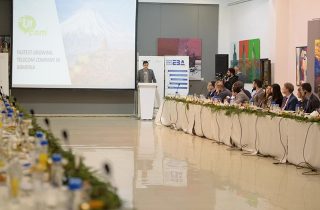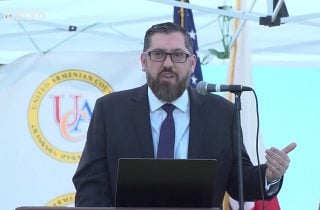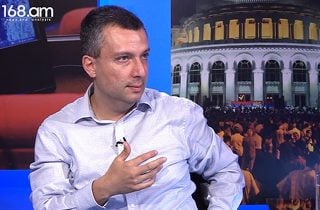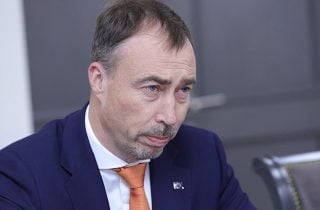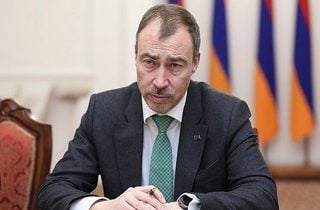Didier Fohlen: “Amulsar project will not only bring direct investments of about 320 mln USD into Armenia, but will also promote indirect investment into the country as wel”
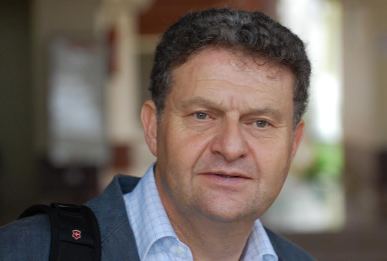
Interview with the Executive Vice President of Lydian International Didier Fohlen.
– The Amulsar project has been front of mind for some time. Would you elaborate on some details of the project at this stage?
– Geoteam has spent several years exploring the area, and we have been able to identify a world-class deposit containing 4.1 Moz of global resource. It took a lot of work and around 69 million USD investments to date to be able to develop the project.
Developing this resource requires significant investment: in people, in technology and in our communities. We want to build a world-class mining facility that will bring substantial benefits to the country, the people of Armenia as well as to our investors.
When we start operations, we will be able to provide up to 1500 jobs during the peak construction stage. We are planning to provide around 700 permanent jobs during at least 10 years of operations. Preference for hiring will of course be given to the local communities after adequate training. And we have already started programmes on building up skills and with some of the local businesses. For example, we have invested in a sawing shop and in three local tree nurseries, which are growing over 60,000 plants to be used as visual impact screen and revegetation activities. There are different needs at different stages of the project, but Amulsar represents a considerable opportunity for the country, the local communities around the area and we believe this investment will help fuel sustainable, long-term economic growth.
– According to the first half year results of the Government, Armenia’s mining sector revenues and taxes have declined. Experts state that it is due to the fall in world metal prices. In your opinion, what will happen in the future? Will the problems of the mining industry continue?
– Commodity prices always go through ups and downs and that is why exploration is a costly and risky enterprise. Mining companies undertake major risks when developing greenfield (i.e. new) projects: they need to make a huge investment in the country over a period of many years before they even begin to see any revenue. Overall, although current gold prices are not very high, the industry cycle may pick up again as it always does and the trick is to create an environment that attracts good investment projects at times of decline, in order to maximise the benefits in more prosperous periods.
– There are opinions now that, taking into consideration the mining sector problems, it is obvious that mining is a vulnerable industry and it should be replaced with agriculture.
– No country with potentially lucrative mineral assets substitutes mining with any other industry. It’s not an economically viable decision. For example, Canada is a leading mining country with major agricultural exports, so is the United States. So it’s about striking a healthy balance and making wise economic decisions.
Commodity prices may be cyclical, but this is about long-term investment in the country’s future. In the long run, the demand for natural resources will continue to grow. At times of crisis it is very important to be open for investments so they will pay off during the good times and provide a continuous source of employment, income and taxes.
World-class mining project like, we are sure, Amulsar will become, will be beneficial for the country in the long run.
Of course it is essential to develop other industries. And successful mining countries, which have managed to attract world-class investments and make their mining sectors efficient and well-managed, have then been able to use the income generated from mining to diversify their economies. Today Australia is not only a leading country in mining, agriculture and tourism, but thanks to the wealth generated by mining it has invested in research and development, in science, technology and healthcare. I am sure that the Armenian mining sector can become a source for developing other industries, including small and medium enterprises and consolidate the economy. But to succeed, mining in this country needs investments, efficient management and new technologies. We are glad that the Armenian government has announced its openness to FDI and we are looking forward to successful cooperation.
– Against the backdrop of the current political and economic developments how would you assess the interest of the potential foreign investors both in Armenia’s mining sector and in general?
– Because, as you mentioned, the metal commodity market is volatile, it has been difficult to attract the kind of high-quality investment we need in the mining sector. Constructing a mine in a way that it benefits the people around it and the country as a whole, as well as those funding the project, means conducting extensive environmental and social impact assessment beforehand. It also includes building high-quality infrastructure so that the mine operates in an efficient way. This is what is required by international standards and what is needed for a project to obtain financing from respected international institutions. Of course, having IFC and EBRD as Lydian shareholders provides additional confidence in the project to other investors.
Lydian has done a significant job in attracting renowned international banks and financial institutions, many of whom have never been to Armenia before. It is essential now to maintain their interest in the project and in the country. This is how the global economy works. Once an international company successfully implements a project in a newly emerging economy, it raises the country’s investment profile and interest among investors who look into other industry sectors and investment opportunities.
We very much hope that the Amulsar project will not only bring direct investments of about 320 mln USD into Armenia, but will also promote indirect investment into the country as well. This is especially important at these times of volatility and economic uncertainty in the region.
– When is Amulsar going to be exploited?
– There have been delays, as you know – we had to change the location of Heap Leach Facility twice due to changes in the Armenian legislation – but we are on the path of completing the procedures required by the Armenian law and regulation to be able to receive the mining permit in the coming months. We expect to start construction in spring 2015.
We are finalizing in September 2014 an updated Feasibility Study and an Environmental and Social Impact Assessment, and are hopeful that we will be able to disclose them to all stakeholders very soon. The successful completion of these studies will allow our investors, including the EBRD and IFC, and commercial banks to assess whether the proposal complies with their strict environmental and social standards – known as the Equator Principles, so then they can decide whether to finance the project.
We know that the local communities are keen to see the construction jobs and then later the permanent jobs come through. We also know that despite concerns and natural worries, the majority in the communities believe that Amulsar will be an example of an efficient, safe and environmentally well-managed mining operation that will bring prosperity to the region.
We are glad to be working with an outstanding professional team of geologists, engineers and environmentalists in Geoteam. The professionalism of our Armenian team is something we greatly appreciate. I know that all of the members of our team in Armenia have been working hard all these years to make this project happen because they can see the great opportunities Amulsar project will bring to Armenia. We are looking forward to starting this investment in partnership with all stakeholders.
By Sargis Ghazaryan











